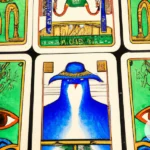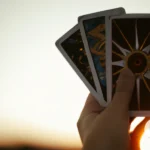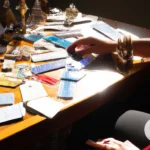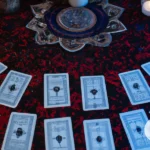Exploring the depths of our inner selves can be a daunting but rewarding journey. One tool that can aid in this process is a tarot card deck. Tarot cards are not just used for fortune-telling, they can also be a powerful tool for self-discovery and personal growth. This guide will walk you through the steps of using tarot cards as a means of self-reflection, providing a variety of exercises to help you explore different aspects of yourself. Whether you’re a seasoned tarot reader or a complete beginner, this guide will provide valuable insights and techniques for using tarot cards to gain a deeper understanding of your true self.
Getting Started: Choosing and Cleansing Your Cards
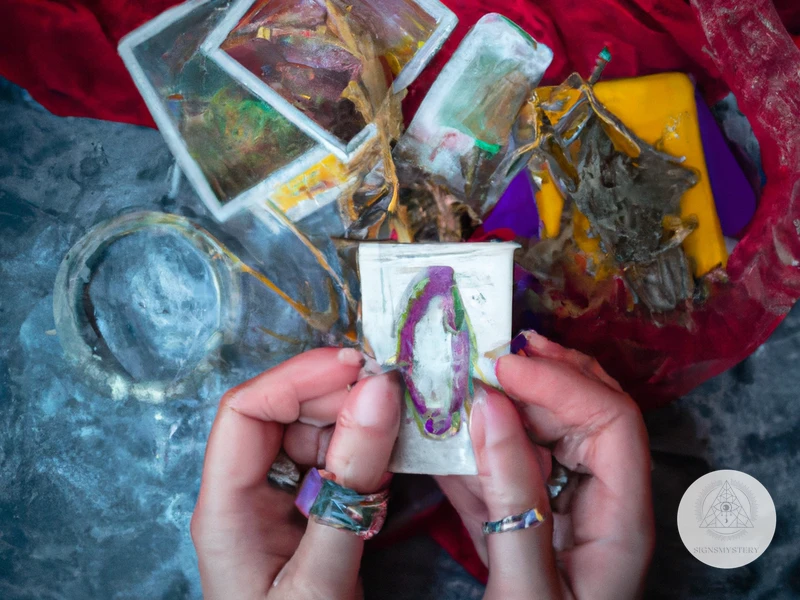
Choosing and cleansing your tarot cards is an important first step to establish a connection with your deck and set the intention for your self-reflection journey. When it comes to selecting a deck, trust your intuition and choose a deck that resonates with you. Depending on your preferences, decks can range from traditional symbolism to modern artwork. After selecting your deck, it’s important to cleanse the cards to remove any negative energy and set a fresh start. Different methods for cleansing include smudging with sage, placing the deck in moonlight, or using intention-setting with crystals. Cleansing your cards can help you focus your energy on the present moment and connect with your intuition. This connection can enhance the accuracy of your readings and reveal deeper insights that can benefit your self-reflection journey.
Choosing Your Tarot Deck
When it comes to choosing your tarot deck for self-reflection exercises, there are a few things to keep in mind. Firstly, it’s important to select a deck that resonates with you on an intuitive level. This can be based on elements such as artwork, symbolism, or personal recommendations. Take the time to explore different decks and find the one that speaks to you the most.
It’s also worth considering the purpose of your self-reflection journey. Are you looking to explore deep, introspective themes or are you seeking a more lighthearted approach? Some decks may lend themselves better to certain types of self-exploration, so it’s important to keep this in mind.
Another consideration is the size of the deck. Some decks may have larger cards with more intricate details that can provide a deeper level of insight, while others may be smaller and easier to handle, allowing for more frequent use. The most common tarot deck contains 78 cards, divided into major and minor arcana.
Ultimately, the most important thing is to choose a deck that feels authentic and meaningful to you. Take the time to connect with your chosen deck and allow yourself to be open to the insights that it can offer.
If you need help with selecting an appropriate deck, check out our article on the benefits of tarot for self-reflection or connecting with your inner self through oracle cards for additional guidance.
Cleansing Your Cards
Before you start using your tarot cards for self-discovery, it is essential to ensure that they are cleansed properly. It is believed that tarot cards absorb energy from the people who handle them, which can affect the accuracy of your reading. Also, the cards might have picked up unwanted or negative energy during the manufacturing and shipping process. Cleansing your cards is crucial to remove any energy that may be lingering on them.
There are several methods to cleanse your tarot cards, including using smoke, crystals, sound, or visualization. One of the most popular ways to cleanse your cards is using smoke from burning sage or palo santo. Hold your deck of cards and pass them through the smoke a few times while setting an intention to clear any energy that no longer serves you. You can also lay your cards on a piece of selenite or clear quartz overnight to replenish their energy and remove any unwanted energy.
Using sound is another way to cleanse your cards. Place a singing bowl or a bell in front of you, hold your deck of cards, and allow the sound to wash over them for a few minutes while setting an intention to remove any energy that doesn’t serve you.
You can use visualization to cleanse your tarot cards. Hold your deck of cards and visualize a bright white light surrounding them. Envision any negative or stagnant energy dissipating into the light and clearing away from your cards.
Cleansing your cards before using them is crucial to ensure accuracy and remove any unwanted energy. There are various ways to cleanse your tarot cards, and you can choose the one that resonates with you the most. Once your deck of cards is cleansed, you are ready to move on to the next step in your self-discovery journey using tarot cards.
Self-Reflection Exercises with Tarot Cards
Tarot cards can be a valuable tool for self-reflection exercises. Self-reflection exercises can help you gain insight into your thoughts, feelings, and actions, and tarot cards can provide a different perspective on the issues you are facing. There are several spreads you can try, such as the Card of the Day, which offers daily guidance and inspiration, the Past, Present, Future spread, which can help you reflect on how the past has influenced your present and how you can shape your future, and the Self-Reflection Spread, which is designed to help you gain a deeper understanding of yourself and your desires. Shadow Work is another spread that can help you confront and work through emotional issues that may be holding you back. For those interested in learning more about tarot spreads for self-reflection, check out this guide. Whatever spread you choose, remember that the cards are not a substitute for taking action or seeking professional help if needed.
1. Card of the Day
The Card of the Day exercise is a simple yet powerful self-reflection exercise that you can practice daily. Simply draw one card from your tarot deck and reflect on the message it brings. What does this card represent? How does it relate to your current situation? Take some time to sit with the card and see what thoughts and emotions come up.
To make this exercise more effective, create a daily ritual around it. Find a quiet space where you can sit and focus. Light a candle or some incense to create a peaceful and sacred atmosphere. Shuffle your tarot deck while focusing on your intention for the day. Then pull one card and reflect on its message.
One way to deepen your understanding of the card is to make a list of keywords or phrases that come to mind when you look at it. Some keywords for a few major arcana cards include:
- The Fool: New beginnings, adventures, trust, taking risks
- The Magician: Manifestation, creativity, action, power
- The High Priestess: Intuition, mystery, inner wisdom, secrets
- The Empress: Nurturing, abundance, creativity, sensuality
- The Emperor: Authority, structure, control, leadership
- The Hierophant: Tradition, faith, conformity, group identity
- The Lovers: Love, relationships, choices, harmony
- The Chariot: Willpower, determination, success, progress
- Strength: Courage, inner strength, patience, self-control
- The Hermit: Solitude, introspection, guidance, inner light
Reflecting on the message of the card of the day and journaling about it can help you gain valuable insights about yourself. It can also help you build a deeper connection with your tarot deck as well as your spirituality. See how this practice can improve your mindfulness and self-awareness throughout the day.
2. Past, Present, Future
The Past, Present, Future exercise involves choosing three cards that represent each of these time periods in your life. This exercise can help you gain insight into how your past experiences are influencing your present circumstances and how your actions in the present can impact your future.
- The Past: The first card represents your past experiences and how they have shaped who you are today.
- The Present: The second card represents your current situation and how you are currently feeling about it.
- The Future: The third card represents the potential outcomes based on your current actions and decisions.
When interpreting the cards, pay attention to the symbols and imagery on each card, as well as their meanings. Consider how they relate to the time period they represent and how they may connect to one another.
To begin the exercise, shuffle your deck while focusing on the time periods and their suggested meanings. Then, draw one card for each time period and place them face down in their respective categories. Once you have selected your cards, turn them over one by one and contemplate their meanings in relation to your life.
This exercise can help bring clarity to your current situation and help you make decisions that will lead to a better future. Try to journal your insights and reflect on how you can apply them to your life. By practicing this exercise regularly, you can develop a deeper understanding of yourself and your path in life.
If you want to learn more self-reflection exercises with tarot cards, check out our Tarot Self-Reflection guide, or explore other options like self-reflection with tarot or oracle cards.
3. Self-Reflection Spread
The Self-Reflection Spread is a popular spread among tarot enthusiasts. It is particularly useful for gaining deeper insight into ourselves and our emotions. This spread involves drawing three cards and placing them in specific positions that correspond to different aspects of our being.
Position 1: The Mind
The first card drawn represents our thoughts and mental state. It can help us understand our mental patterns and any limiting beliefs or self-talk that may be holding us back. It provides an opportunity for us to examine our thoughts and find ways to shift our mindset towards a more positive and empowering one.
Position 2: The Heart
The second card represents our emotions and the matters of the heart. It can help us gain clarity on our emotional state and any inner conflicts we may be experiencing. It allows us to examine our feelings more deeply and find ways to process and integrate them in a healthy way.
Position 3: The Body
The third card represents our physical being and our relationship with our body. It can help us understand any physical or health issues we may be facing and the underlying emotional and mental factors that may be contributing to them. It provides an opportunity for us to explore our relationship with our body and find ways to nourish and care for it in a more holistic way.
The Self-Reflection Spread is an effective tool for gaining deeper insight into ourselves and our inner landscape. By understanding our thoughts, emotions, and physical body, we can find ways to heal and grow in a more integrated and holistic way. With regular practice, this spread can help us develop greater self-awareness and empowerment in all areas of our lives.
4. Shadow Work
Shadow work is a deep level of self-reflection that involves exploring the parts of ourselves that we have repressed or denied. These are the aspects of ourselves that we may deem as negative or undesirable, but which are integral to our overall personality. Tarot cards can serve as a valuable tool in shadow work by helping us to identify and work with these hidden parts of ourselves.
To begin shadow work with tarot cards, choose a card that represents a quality or trait that you dislike or feel uncomfortable with. Draw this card and take some time to contemplate its meaning and symbolism. What aspects of this card do you resonate with, and what parts make you feel uneasy or uncomfortable?
The next step in shadow work is to explore the origin of these feelings and beliefs. Why do you feel uncomfortable with this quality
Subscribe to Our Newsletter
Sign up to receive the latest news and updates.
Once you have identified these areas of discomfort or fear, it’s important to work on them with compassion and understanding. This can involve affirmations or visualization exercises to help integrate these aspects of yourself. For example, if you drew the Death card and feel uncomfortable with the idea of endings, you could work on visualizing the positive aspects of change and the opportunities that come from new beginnings.
Shadow work can be a challenging process, but it can also lead to profound growth and self-acceptance. By using tarot cards as a tool in this process, you can gain valuable insights and understanding of yourself, leading to a more integrated and whole sense of self.
Integrating Your Discoveries into Your Life
After completing the self-reflection exercises with tarot cards, you may find that you have gained valuable insights into your life and yourself. However, it is important to keep in mind that these insights only hold value if you apply them to your daily life. One way to do this is by journaling your thoughts and impressions after completing each exercise. This will allow you to revisit your insights and see how they have evolved over time. Additionally, you can use the insights gained from tarot to create affirmations that reinforce positive beliefs and to develop action steps that move you closer to your goals. By integrating your discoveries into your life, you can reap the full benefits of self-reflection and create positive change.
Journaling Your Insights
One of the most effective ways to integrate your tarot insights into your life is by journaling. Writing down your thoughts and feelings can help you process your discoveries and gain a deeper understanding of yourself. Here are some tips for journaling your tarot insights:
| Tip | Description |
|---|---|
| Make it a Habit | Set aside a specific time each day or week to journal. Consistency is key. |
| Write Freely | Don’t worry about grammar, spelling, or structure. Just let your thoughts flow onto the page. |
| Include Card Images | Draw or print out images of the cards you pulled and include them in your journal entry. This can help you visualize your insights. |
| Reflect on Your Life | Use the insights you gained from your tarot reading to reflect on your life and current circumstances. |
| Ask Yourself Questions | Use prompts or questions to guide your journaling. For example, “How can I apply this insight to my life?” or “What is this card teaching me about myself?” |
| Track Your Progress | Look back on your journal entries to see how your insights and understanding have evolved over time. This can be a powerful way to track your personal growth. |
Journaling can be a highly personal and introspective practice. It can provide a safe space for you to explore your thoughts and emotions and gain clarity on your path forward. The insights you gain from your tarot readings can provide valuable guidance and support along the way.
Creating Affirmations and Action Steps
Creating affirmations and action steps based on your insights from tarot card readings can be a powerful way to integrate self-discovery into your daily life. Affirmations are positive statements that affirm your desired outcomes and help to reprogram your subconscious mind. Action steps are actionable items you can take to move towards those desired outcomes. Here are some tips for creating effective affirmations and action steps based on your tarot readings:
1. Focus on the Positive: When creating affirmations, focus on positive statements that affirm what you want to manifest in your life, rather than what you want to avoid or eliminate.
2. Use the Present Tense: Phrase your affirmations in the present tense, as if what you want is already happening. This helps to reinforce the belief that your desired outcome is already a reality.
3. Be Specific: Get specific about your desired outcomes and what you want to manifest in your life. The more specific you are, the more focused your subconscious mind will be in helping you achieve those outcomes.
4. Use Emotion: Infuse your affirmations with positive emotions, such as joy, gratitude, and excitement. The stronger the emotional charge behind your affirmations, the more effective they will be.
5. Take Action: Action steps are actionable items you can take to move towards your desired outcomes. Based on your tarot readings, identify specific actions you can take to bring your desired outcomes into your reality.
6. Make a Plan: Once you’ve identified your action steps, create a plan with specific timelines and milestones to help you stay on track and measure your progress.
7. Stay Committed: Remember that creating lasting change takes time and commitment. Keep your affirmations and action steps front and center in your daily life, and take consistent action towards your desired outcomes.
Conclusion
Using tarot cards for self-discovery can be a powerful tool for gaining deeper insights into your thoughts, feelings, and beliefs. By incorporating regular tarot practices into your daily routine, you can explore your inner landscape and develop a stronger sense of self-awareness.
Remember to approach tarot with an open mind and a willingness to explore your inner world. Don’t be afraid to dive deep and confront uncomfortable truths. The insights gained from tarot can be both transformative and healing.
Before you begin any tarot practice, ensure that your deck is cleansed and that you have a strong connection with your cards. Take the time to get to know each card and its meanings, so that you can accurately interpret their messages.
When performing self-reflection exercises with tarot cards, start with simple spreads, such as the card of the day or past, present, future, before moving onto more complex spreads like the self-reflection spread and shadow work.
Journaling your insights and creating actionable steps based on your readings can help you integrate your discoveries into your daily life. Remember to use affirmations to keep yourself on track and don’t be afraid to seek professional help if you feel overwhelmed or stuck.
Overall, tarot can be an incredibly powerful tool for self-discovery and self-reflection. By incorporating regular tarot practices into your routine and approaching them with an open mind, you can gain deeper insights, develop greater self-awareness, and create a more fulfilling life.
Frequently Asked Questions
What are tarot cards?
Tarot cards are a deck of 78 cards that have been used for divination and self-discovery.
What is the difference between tarot and oracle cards?
Tarot cards have a specific structure and meaning associated with each card, while oracle cards are more free-form and can have a variety of meanings depending on the deck.
Do I need to be psychic to use tarot cards?
No, you do not need to be psychic to use tarot cards. Anyone can learn to use them for self-discovery.
How do I choose a tarot deck?
Choose a deck that speaks to you and that you feel a connection to. Look at different styles and artwork to find the one that resonates with you the most.
Can I use any tarot spread for self-reflection?
Yes, you can use any tarot spread that feels right for you. There are many different spreads to choose from, so find the one that works best for your specific needs.
What should I do if I don’t like the message I receive from a tarot card?
Remember that tarot cards are a tool for self-reflection and growth, not fortune-telling. If you receive a message you don’t like, use it as an opportunity to reflect on why it is causing a negative reaction and what changes you may need to make in your life.
How often should I use tarot cards for self-reflection?
There is no set frequency for using tarot cards for self-reflection. It is up to you to decide how often you would like to use them in your self-care practice.
Can tarot cards predict the future?
While tarot cards can offer guidance and insight into potential outcomes, they cannot predict the future with certainty. Remember that you have the power to make your own choices and create your own future.
What if I don’t understand the meaning of a tarot card?
If you don’t understand the meaning of a tarot card, look it up in a guidebook or online resource. Remember that the meaning of each card can vary depending on the interpretation, so go with what resonates with you personally.
Can I use tarot cards for group self-reflection?
Yes, you can use tarot cards for group self-reflection exercises. Just make sure everyone is comfortable with the process and open to sharing their insights and experiences.




